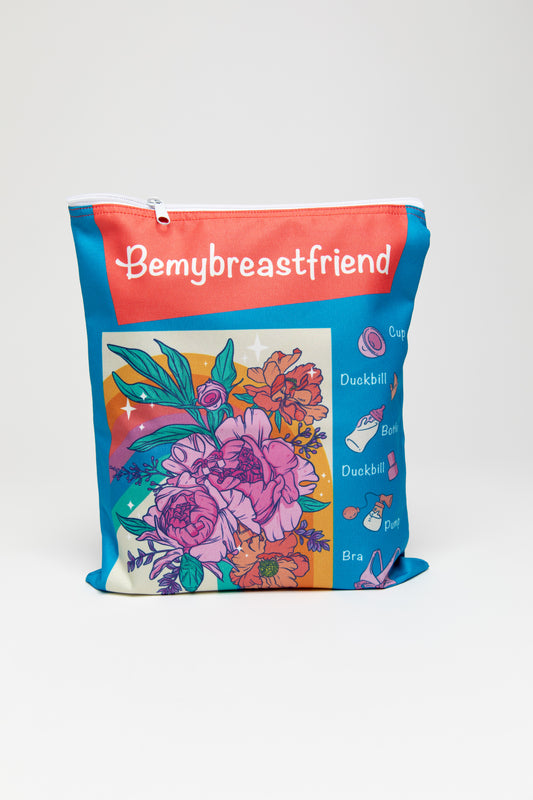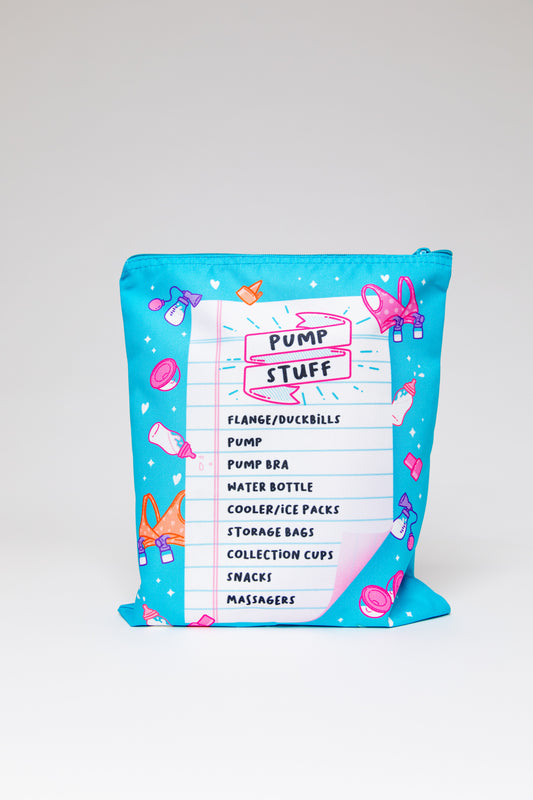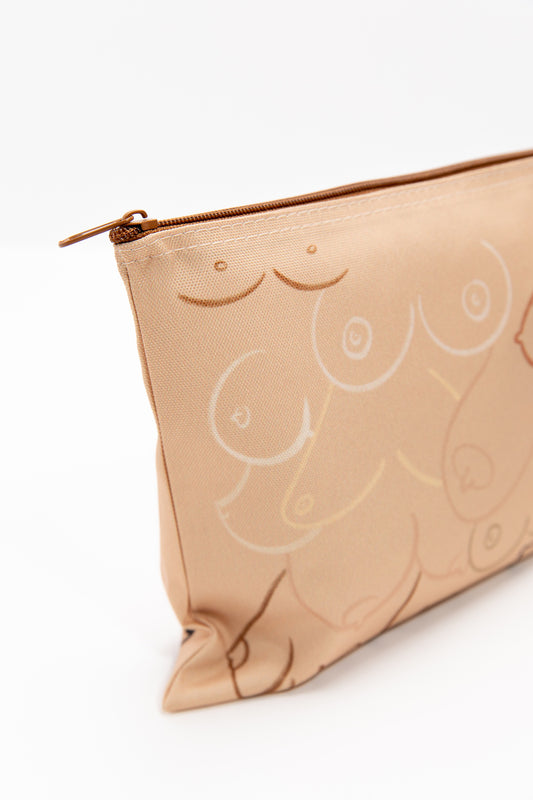
Updated 6/3/2024
Let's talk about the exclusive pumping lifestyle! Exclusive breast pumping is a form of breastfeeding in which mom feeds her baby breastmilk by offering expressed milk in a bottle. (In case you are wondering ---Yes, these are STILL considered breastfed babies.) There are many valid reasons a new parent might choose exclusive pumping to meet baby's nutritional needs. A few of the most common reasons for exclusive pumping include:
MEDICAL REASONS
In some cases, your new baby may have a medical condition that makes breastfeeding difficult, resulting in separation. It's very common for NICU babies to require bottle feeding or Gastrostomy Tube (g-tube) feeding during their supervised stay. New moms who desire to offer breastmilk can express milk to provide the NICU while unable to feed baby at the breast.
POOR LATCH
In the early days of breastfeeding your baby, you may find that your little one has a difficult time latching. This could be caused by a tongue or lip tie, cleft lip or pallet, etc. These reasons can result in long term pumping or short, depending on the solutions needed to help teach or modify baby’s latch. A skilled lactation consultant can help assess your baby's latch and help you develop a feeding plan that is a good fit for you and your baby. Removing milk by pump while identifying these issues will be essential to demanding milk production while navigating baby’s feeding techniques.
BREASTFEEDING DIFFICULTIES
Some women find breastfeeding extremely difficult. It can be painful, stressful, and take a lot of time. In these cases, many new moms consider exclusively pumping to be the best option for offering breastmilk to their babies.
PROFESSIONAL COMMITMENTS
Many first-time exclusive pumping moms choose this path because of their work schedules and commitments. They know they will need to pump several times each workday, and may find it easier to adopt an exclusive pumping schedule, rather than switching back and forth between breastfeeding and bottle feeding.
MULTIPLES
Moms of multiples often opt for exclusive pumping simply because it can make life with twins (or more) a whole lot easier. It is possible to tandem nurse two babies at once and many moms of triplets or more find their routine with nursing all of their babies at the breast but there are several other factors that may be considered when choosing to pump for more than one baby. Following the simple convenience of bottle-feeding multiples, some parents find more comfort knowing exactly how much their babies are feeding at each session. Another popular reason to choose pumping and bottle feeding your multiples is to share feeding responsibilities with others!
5 TIPS FOR FIRST-TIME EXCLUSIVE PUMPING MOMS
 ⠀
⠀
1. BE PREPARED
Not every pumping mom knew before her baby was born that she would be exclusively pumping to feed her baby. BUT --- if you are planning ahead and intend to exclusively pump, there are several things you can do to be prepared. Here are a few suggestions:
-
Leading up to delivery day confirm with your provider what, if any, pumping supplies will be provided by the hospital. Things to ask about include breast pump, duckbills, flanges, collection bottles, and storage bags. Some hospitals offer a lot...some don't! Asking about supplies will make packing for your baby's birth easier. Listen to this Chit-Chat all about whether or not you should bring your pump to the hospital!
-
Pack a hands-free bra in your hospital bag. My favorite hands-free pumping bra is The Amelia by Davin & Adley. If you're interested in giving this bra a try, use my code BEMYBREASTFRIEND for 10% off.
- Stock up on storage bags. Once your full milk supply comes in, you may need a way to store your milk. I recommend having a stash of freezer bags on hand before baby arrives. (Bonus tip: use that last trimester "nesting" energy to clean out your freezer. Your postpartum self will thank you.)
2. PRIORITIZE SKIN TO SKIN
Regardless of whether you intend on direct nursing or pumping, skin-to-skin is still an essential time following delivery. Many (correctly) believe that skin-to-skin is meant to assist with baby's rooting to the breast for their first feeding. This is absolutely true! Placing baby on the bare chest of mom directly after birth does make it easier for this new little one to find mama's breast and nurse for the first time. However, establishing nursing IS NOT the only reason to prioritize skin-to-skin. Additional benefits of this practice include:
- Transfer of healthy bacteria from mother to baby
- Body temp regulation
- Comfort
- Regulating mom's hormonal response
- and more!!
Even if you intend on exclusive pumping (and as we've already established, there are many valid reasons for this choice) you may consider allowing your baby to latch for their first feeding and follow this feed with pump sessions. Many moms choose not to implement the pump while they are recovering in the hospital post dellivery. Allowing baby to latch and become familiar with the breast and learning whats comfortable for both mom and baby can help in situtaions down the road if a bottle is unavailable and mom needs to feed baby at the breast. Also, considering minimal amounts of colostrum is due to feed baby during those early postpartum days, mom may not find it necessary to move milk by pump. Listen to Episode 10 of Tired Moms Club with guest Courtney Olsen of Lactation Chat all about "nipple confusion" and chosing the right bottle for baby.
⠀
3. THINK ABOUT YOUR SCHEDULE
Think about your pumping schedule. The standard recommended protocol for moms nursing babies at the breast is between 8-12 times within 24 hours. This is helpful to establish a good milk supply and to ensure that your baby is getting adequate feedings throughout the day.
We have to remember as exclusive pumpers we are aiming for a similar schedule. I will 100% agree that strapping up to a pump every 2 hours is not the easiest thing to do. While everyone's body and supply needs are different, I am going to go against the grain and tell you that if you’re able to successfully pump between 7-9 times in a 24 hour period you’re doing a great job.
⠀
4. CHECK YOUR FLANGE SIZE
Most new breast pumps come with two sets of flanges: 24mm or 28mm. One of those will probably fit...right? WRONG. Honestly, the idea that only TWO flange sizes would be enough to fit all women everywhere is kind of insane. If I could have it my way I would include 19, 21, 24, 28mm flanges AND a measuring tool.
(A girl can dream.)
So...why does flange size matter so much? A breast pump flange is intended to simulate a proper breastfeeding latch. Just like a bad latch can cause poor feeding for a nursing baby, the wrong flange size can impact the amount of breast milk you are able to express. The difference between emptying your breasts efficiently and clogged ducts can all be resolved with the proper flange size.
Tips for Proper Flange Sizing
- Use a proper measuring tool. Measure your nipples using a ruler like this one. This will help you choose the "best fit" flange size, cutting down on inefficient pumping sessions and time wasted "trial and erroring."
- Wait until after delivery to spend money on additional flanges. You may discover your nipples may change size due to hormonal changes. If you are measuring smaller than the provided flanges, consider investing in flange inserts while navigating your best fitted flange size. Check out these inexpensive flange inserts to help get you pumping comfortably.
5. LONGEVITY
When I talk to mamas about transitioning to exclusive pumping, I often hear the same concern: "What will happen to my milk supply?" It's a valid question. After all, the whole point of putting the time and energy into pumping is to have milk to feed your baby.
Here's the good news:
YES! Exclusive pumping CAN absolutely maintain your supply for an extended amount of time. As long as you are regularly expressing milk (regardless of whether this is done pumping or nursing) your supply will not dry up.
Looking for more tips and support for first-time exclusive pumping moms?!
In this episode of The Tired Moms Podcast, I unpack my best tips for transitioning from exclusively breastfeeding to exclusively pumping. You can also view a live ranking of my favorite breast pumps HERE! In this video, I rank some of the most popular pumps on the market today from BEST to WORST.
Links may generate commisson at no additional cost to you








